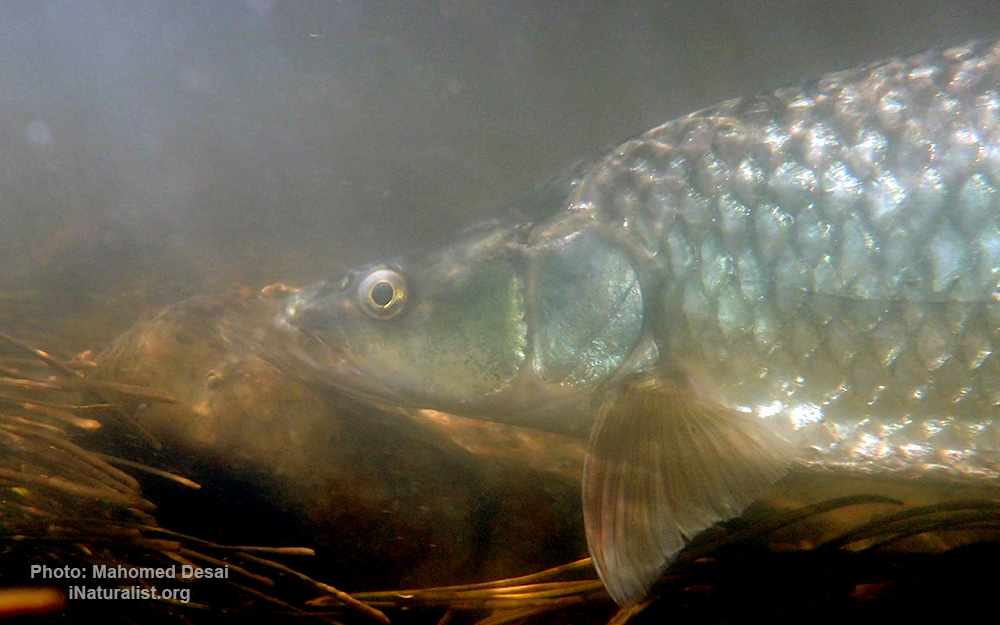Largemouth yellowfish
(Labeobarbus kimberleyensis)

Classification
General data
The largemouth yellowfish or Vaal-Orange largemouth yellowfish (Labeobarbus kimberleyensis) is a ray-finned fish species in the family Cyprinidae. This large freshwater barb is found in southern Africa.
The largemouth yellowfish occurs in the Orange and Vaal Rivers and their larger tributaries (e.g. the Riet River) in Lesotho, Namibia and South Africa. In the latter country, it is found in Eastern Cape Province, Free State, Gauteng, Mpumalanga, North-West Province and Northern Cape Province.
L. kimberleyensis is predominantly found in deep pools (deeper than 2 metres/yards) of large rivers, as well as in the slow-moving water before weirs and river dams (e.g., Sterkfontein Dam). Abundant water weeds, overhanging riparian vegetation and other forms of plant cover seem to be essential for its well-being.
They are predators of aquatic large invertebrates and small invertebrates; adults feed almost exclusively on fish.
Spawning occurs in riffles during summer (around December/January); a large female can lay more than 60,000 eggs.
They are slow-growing and long-lived and reach a total length of 30 cm (12 in) only after five years.
Max length : 82 cm FL; max. published weight: 22 kg
Status and conservation
Compared to some of its relatives, the stocks of the largemouth yellowfish are still relatively healthy and it is not considered a threatened species. It is listed as Near Threatened by the ICZN though, as many ecosystems in which it occurs are severely degraded, and if this does not change, it probably cannot maintain viable populations for long. In the lower Orange River, considerable numbers are still found. Damming may cut off local populations from spawning sites.
The Vaal River is highly laden with pollutants from sewage outside the wet season, and fish kills have been reported due to this.
As it is an apex predator, its population density cannot be high.
It is popular with anglers and a valuable food species, but it is recommended to catch and release it until the water quality is improved – for one thing, catching them for food may deplete local stocks to the point of extinction, for another, as an apex predator it accumulates toxins and may not be safe to eat. Whether significant introgression with the smallmouth yellowfish (Labeobarbus aeneus) occurs and yields less viable hybrid offspring (which would also serve to decrease its stocks) needs to be determined.
L. kimberleyensis is found in the Augrabies Falls and Richtersveld National Parks. Anglers are being educated about this flagship species and encouraged to practice catch and release, which is mandatory in Free State. The species has also been successfully transplanted to dams within its range that have nearby shallow-water regions for spawning.










